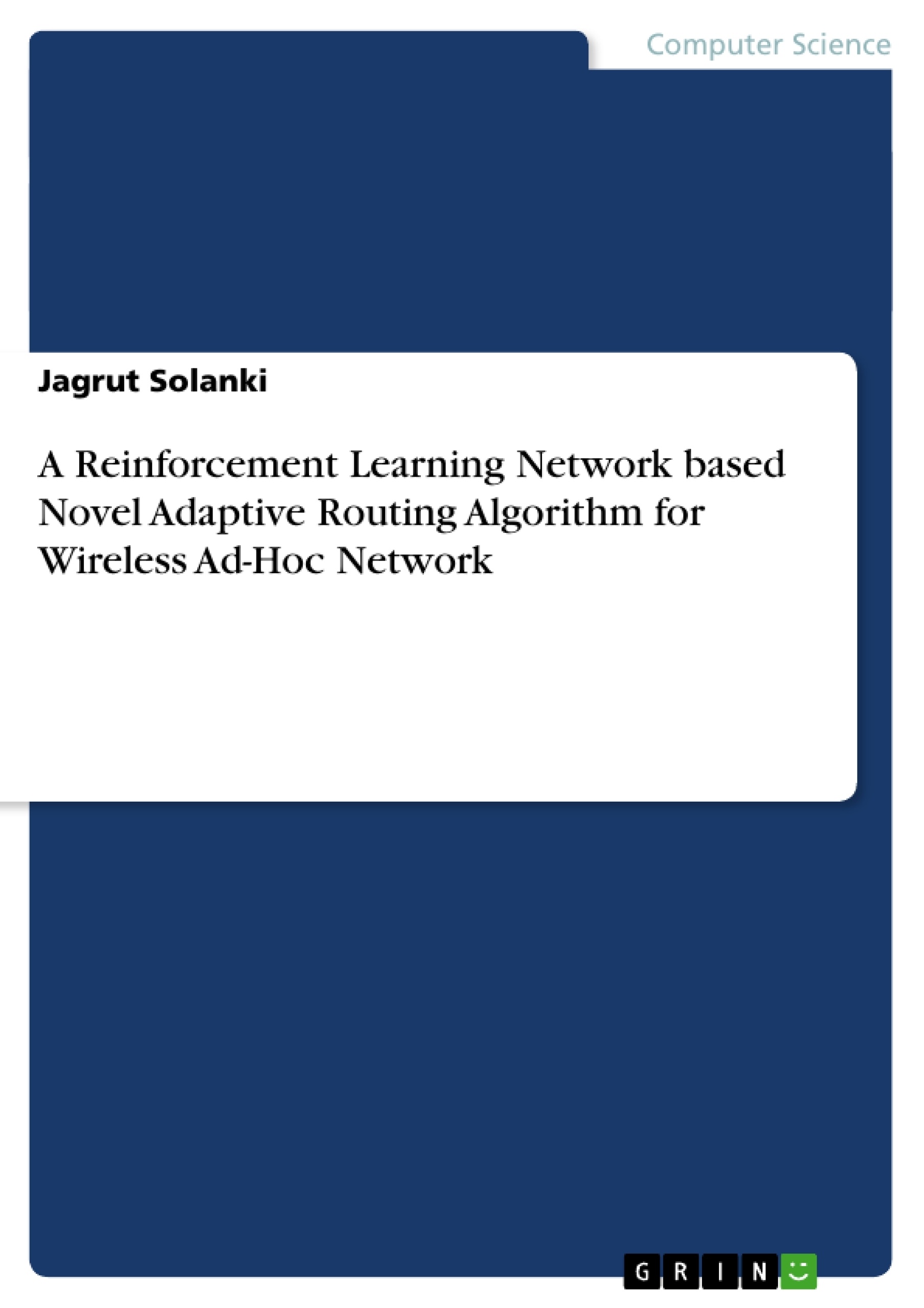A Wireless network is a collection of autonomous mobile nodes that communicate with each other over wireless links without any fixed infrastructure. It is a method by which homes, telecommunications networks and enterprise installations avoid the costly process of introducing cables into a building, or as a connection between various equipment locations. A routing protocol is taking a vital role in the modern Wireless Network. Mobile ad hoc network (MANET) is an autonomous system of mobile nodes connected by wireless links. Each node operates not only as an end system, but also as a router to forward packets .The nodes are free to move about and a network.A routing protocol which is responsible to determine how nodes communicate with each other and forward the packets through the optimal path to travel from a source node to a destination node. The purpose of paper is to contribute the study and comparison of routing protocols performance in MANET
Inhaltsverzeichnis
- Abstract
- Introduction
- OVERVIEW OF VARIOUS ON-DEMAND ROUTING PROTOCOLS
- Table Driven (proactive) Routing Protocol
- DSDV
- On-Demand (Reactive) Routing Protocol
- AODV
- DSR
- Hybrid Routing Protocols
- ZRP
- COMPARISON OF ROUTING PROTOCOLS
- CONCLUSION
Zielsetzung und Themenschwerpunkte
This paper aims to contribute to the study and comparison of routing protocol performance in Mobile Ad-Hoc Networks (MANETs). It explores the characteristics and functionalities of various routing protocols, including proactive, reactive, and hybrid approaches.
- Comparison of different routing protocols for MANETs
- Analysis of the performance of routing protocols based on parameters like overhead and packet delivery fraction
- Evaluation of the impact of factors like node speed and mobility on routing protocol performance
- Exploration of the advantages and disadvantages of different routing protocol approaches
- Discussion of the suitability of specific routing protocols for different network scenarios
Zusammenfassung der Kapitel
The paper begins by introducing the concept of wireless ad-hoc networks and their significance in the computing industry. It highlights the importance of routing protocols in enabling communication between mobile nodes in such networks. The paper then delves into the categorization of routing protocols, outlining the key differences between table-driven (proactive) and on-demand (reactive) approaches.
The paper provides detailed descriptions of two prominent proactive routing protocols: DSDV (Destination Sequenced Distance Vector) and ZRP (Zone Routing Protocol). It explains the mechanisms by which these protocols maintain routing tables and update them in response to network topology changes. The paper also discusses the advantages and disadvantages of each protocol, highlighting their strengths and limitations.
The paper then focuses on on-demand routing protocols, which are designed to reduce control overhead and conserve power. It provides a comprehensive overview of several on-demand protocols, including AODV (Ad Hoc On-Demand Distance Vector Routing) and DSR (Dynamic Source Routing). The paper explains the route discovery and maintenance processes employed by these protocols, emphasizing their unique features and operational principles.
The paper concludes by presenting a comparative analysis of the discussed routing protocols. It summarizes their key characteristics, advantages, and disadvantages, providing insights into their suitability for different network scenarios. The analysis highlights the factors that influence the performance of each protocol, such as node speed, mobility, and network size.
Schlüsselwörter
The keywords and focus themes of the text include wireless networks, routing protocols, MANETs, AODV, DSDV, DSR, ZRP, proactive routing, reactive routing, hybrid routing, overhead, packet delivery fraction, node speed, mobility, and network topology.
- Citar trabajo
- Jagrut Solanki (Autor), 2014, A Reinforcement Learning Network based Novel Adaptive Routing Algorithm for Wireless Ad-Hoc Network, Múnich, GRIN Verlag, https://www.grin.com/document/286150




